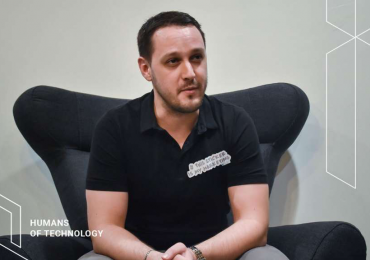The Future of Blockchain, explained

Blockchain has become a buzzword in every tech-related discussion. Where did it start and what’s going to happen to blockchain-powered platforms in the future?
We were honored to welcome a man who has really been a trailblazer in the development of blockchain in Thailand. Blockchain evangelist and the CEO of BitKub, Topp (Jirayut Srupsrisopa), shared his views on blockchain at the Humans of Tech FireSide Chat.
If you haven’t watched his interview, we recommend you to do it now!
Top, who has been in the industry for 5 years now, took the time to reflect on the evolution of cryptocurrencies and the future of the blockchain industry. He explained how blockchain has developed and what it’s turning into.
Here are the Development Stages of the Blockchain Industry
Stage 1: the birth of blockchain
20 years ago, the first layer of the internet was created: it made it possible for us to digitalize any kind of information and share it instantly. It allowed peer to peer sharing, but it created as many digital copies of a unit as the number of times it was shared.
For example, if I sent a document to a friend, I would keep it stored on my terminal, and he would receive a copy of that document. Creating copies would consequently deprecate the value of the items shared.
Blockchain was created as a second layer of the internet. It is a protocol like the TCP/IP, but it does create value. Thanks to this technology, when you send a friend a banknote, it will instantly disappear from your own terminal.
Blockchain does not duplicate information and makes it possible to digitize value, to create digital scarcity.
The first application of blockchain was Bitcoin, in 2009. Bitcoin is a protocol that facilitated money transfer, by creating an online currency, and it quickly became widespread. Today, although Bitcoin is the most famous, there are about 200 digital currencies. This has triggered the beginning of drastic changes: banks are now aware that they need to adapt, to change.
Stage 2: expanding towards new horizons
Blockchain was then pushed beyond finance. As a second stage, it was used to grow the internet of assets. Since the blockchain offers traceability and transparency, it is now used to ensure authority integrity.
For example, it is used to prevent land rights abuse, or to verify food traceability. As a matter of fact, Alibaba has developed a patent that allows end-to-end supply chain traceability and transparency, by tracing the history of every item.
Stage 3: the value ecosystem
Blockchain technology has also more recently given birth to a new generation of companies that are decentralized. These companies can function by themselves because they are bound to follow rules encoded as a computer program, that run in a transparent way.
These companies are controlled by all shareholders and are not influenced by a central government. This is made possible by the secure digital ledger of blockchain that tracks each and every transaction made.
Stage 4: the value web
The web 3.0, as it is called, is the last stage blockchain has brought to the global economy. It’s all about value sharing, peer to peer. Each node in the blockchain becomes interoperable: you’d be able to pay for gas with your airplane miles that are about to expire or buy groceries at the supermarket with your video game coins. There will be cards that gather every single way of value exchange, and different digital currencies that become interoperable.
This is called a decentralized exchange protocol – it allows merchants to use and receive any format that they want as a currency, making the life of consumers much easier, bringing shopping to another level.
What’s next?
By 2020, Southeast Asia will account for being the 4th biggest economy in the world – but one of the things that are holding it back is the talent gap, primarily in tech. This gap is a huge weight on the region, and talents must be nurtured to overcome that challenge. GetLinks is here to bring people together and change the stereotypes about tech – with the purpose of creating a better technology sector.
By Noémie Kempf
Full-time writer, Marketing consultant and part-time nerd, Noémie specializes on topics of digital transformation, future of work, virtual reality and artificial intelligence.


